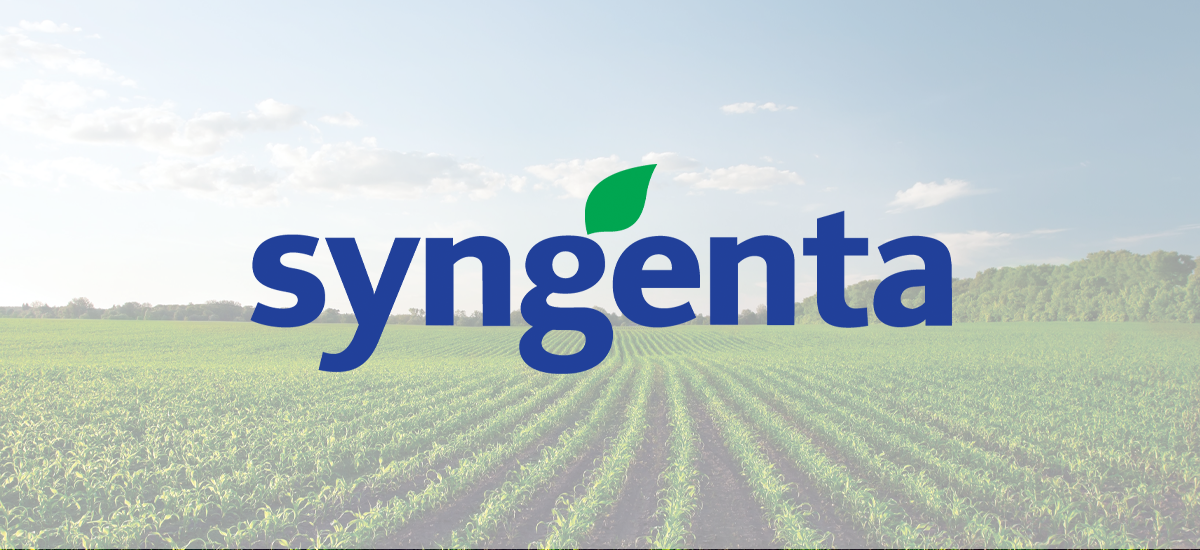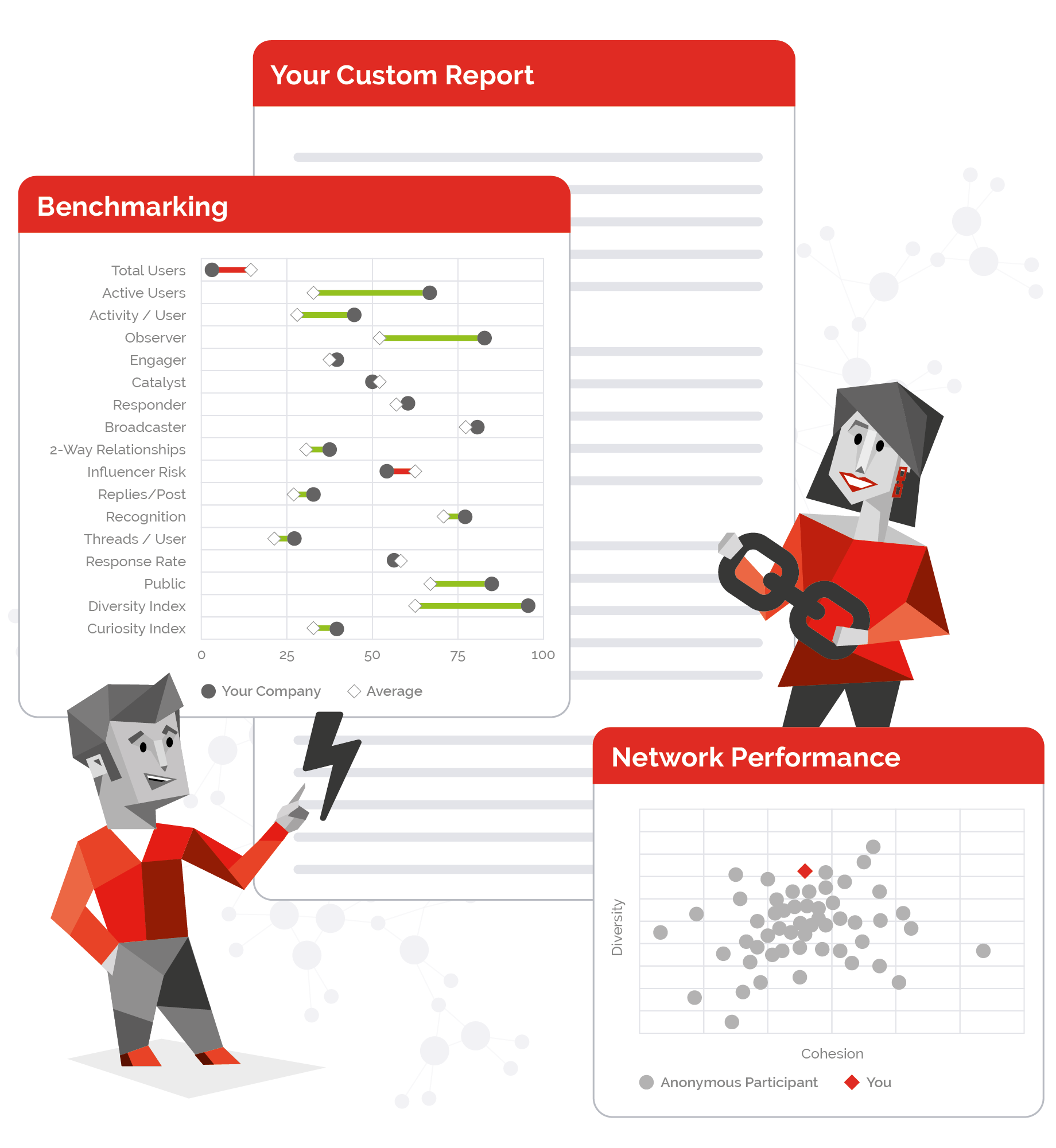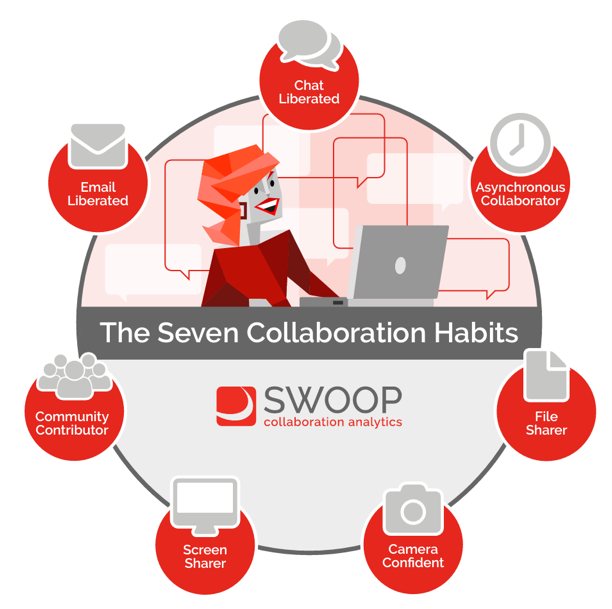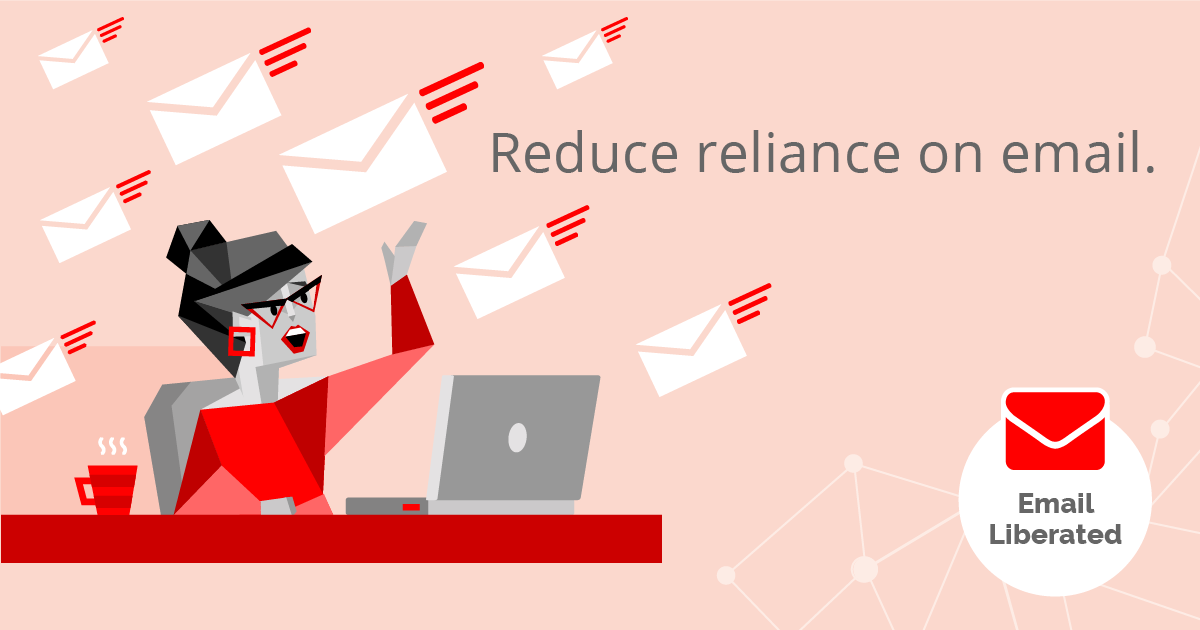SWOOP Analytics®’
M365 Benchmarking
Report 2022
The world’s largest data analysis into the collaboration behaviours on Microsoft 365. We’ve analysed 213,411 M365 accounts, 3,773 groups / departments across 18 organisations.
Register today and receive your free copy!
“About 10% of employees could be experiencing digital overload while hybrid working. But 50% are mostly digitally disconnected while hybrid working.”
FREE DOWNLOAD
↓ Full report (105 pages)
It’s been more than two years since the world was forced into lockdown and working from home (WFH). During this time, we have learned much about remote working habits. SWOOP Analytics has published comprehensive analysis reports for Microsoft Teams , Yammer and Workplace by Meta. We learned what practices were working well and which practices could be comfortably left behind. During 2021 we collated that knowledge to form a position on what practices to avoid while WFH. We published an article titled The Seven Deadly Sins of Digital Working. We later took those “sins” and rephrased them into positive, actionable habits. This is what you now see in SWOOP for M365; an analytics platform that monitors and nudges you on building positive collaboration habits, personally, in your teams and across your organisation.
-
Collectively we analyzed 18 globally distributed organizations, 113,655 active M365 accounts, 213,411 M365 accounts when guests were included and 3,773 groups/departments. Our data was drawn from a six-month period between October 2021 and March 2022; a period that encompassed many attempts to return to the office, but largely where most staff were working from home.
The early adopters of SWOOP for M365 have provided us with the opportunity to conduct a unique and distinctive benchmarking analysis of digital working as it is happening now; when organisations are making decisions about returning to the office and undertaking hybrid working patterns. As with all our benchmarking studies, we do not rely on surveys. We passively monitor everyone in the organisations we study. We include those staff who you will never find responding to surveys. We analyse what people actually do, rather than what they think they do.
-
Dr. Laurence Lock Lee is a Co-founder and the Chief Scientist at SWOOP Analytics.
He is an experienced professional with more than 40 years experience as a researcher, technology leader, educator and management consultant. Dr. Lock Lee has published two books and numerous journal and industry articles. He is a regular contributor to CMSWire and blogs at SWOOP Blog.
Sharon Dawson is SWOOP's Director, External Relationships & External Communication.
She is experienced in media and communications, having spent more than a decade working
for Australian Associated Press (AAP) in the Sydney, Canberra, and London bureaux.
She joined the SWOOP team in 2017 as it expanded into the US. Sharon holds a Bachelor of Arts (Communication Studies)
Key Findings in Charts
MOST POPULAR INSIGHTS
1. While surveys have identified the overconnected, our digital tracking study has reveals 50% of workers using M365 are, on average, digitally disconnected.
2. Asynchronous working to reduce reliance on meetings and email is woefully low.
3. Chat is replacing email. But chat is potentially more disruptive; like jumping from the frying pan and into the fire.
4. Highest performing groups are unified around the consistently good digital habits of its members. Low performing groups are unified around their common levels of digital inactivity and disconnection.
SWOOP’s 2022 M365 Benchmarking Report will give you practical ways to improve collaboration across your organisation. You'll read case studies from some of the top performers to learn their secrets to collaboration, and ideas of how to implement their best practices across your organisation. We share benchmarks of the best, and worst, practices to give you achievable goals.
The following charts examine:
1. The top 10% of M365 users are responsible for 42% of total meeting time spent, whilst the bottom 50% are responsible for only 6%.
2. Email is holding us back, with few working in Teams channels compared with internal email – missing out on huge time savings.
3. Highest performing groups are unified around the consistently good digital habits of its members. Low performing groups are unified around their common levels of digital inactivity and disconnection.
4. Posting in Microsoft Teams channels or Yammer instead of email and/or meetings, staff could save, on average, 26 minutes a day.
5. The constant interruptions from Microsoft Teams chat are significant.
6. Leaders, on average, are demonstrating superior collaboration habits than non-leaders. Almost 40% of non-leader staff had not participated in a one-on-one call with either leaders or colleagues over the six-month period.
FREE DOWNLOAD
↓ Full report (105 pages)
The busiest 10% of staff accounted for 42% of the total minutes spent in online meetings. The least active 50% of staff accounted for only 6% of all meetings minutes spent.
1.
Working collaboratively is non-negotiable at consulting company Engage Squared. Engage Squared works out loud, whether that’s internally as a team, or for any project with a client. Read the case study »
Time spent in meetings or calls/day
Asynchronous working to lessen the time spent in meetings and email is woefully low.
2.
Six months into working from home due to the COVID-19 pandemic, employees at Syngenta were feeling drained by the seemingly endless number of online meetings and calls.
The Workplace Technologies team in the IT department at Syngenta stepped in to help its employees learn to work asynchronously, and reduce the time spent in meetings or replying to emails. Read the case study »
Average time spent/day on M365 activities
Mismatched collaboration habits within close working teams can be disastrous for collaboration.
There is a need to align the collaboration habits of group members, if optimal group collaboration is to be achieved. Highest performing groups are unified around the consistently good digital habits of its members. Low performing groups are unified around their common levels of digital inactivity and disconnection.
3.
With the onset of the COVID-19 pandemic, CityFibre’s Software Delivery team had to immediately learn how to turn a successful physical workspace into a successful digital workspace. Read the case study »
Departmental collaboration habits score vs variation
The largest opportunity for time savings is where variation in digital habits is greatest. Variation was greatest in how staff chose to work asynchronously, rather than in meetings, and likewise for email.
Posting in Microsoft Teams channels or Yammer instead of email and/or meetings, staff could save, on average, 26 minutes a day. This is equivalent to an annual saving of $USD70 million, or a 5% increase in headcount, for an average-sized organization of 10,000 staff.
4.
Collaboration habits - variations
Chat is replacing email. But chat is potentially more disruptive; like jumping from the frying pan and into the fire.
5.
Teams chat messages sent/week
Leaders, on average, are demonstrating superior collaboration habits than non-leaders.
Almost 40% of non-leader staff had not participated in a one-on-one call with either leaders or colleagues over the six-month period.
6.
Gone are the days when it was an “us” and “them” relationship between service providers and clients. RealFoundations has broken the divide by inviting clients to work together as a true team in Microsoft 365. Engaging this way has built trust – quickly - and significantly increased the speed with which work is performed and delivered.
Read the case study »
Leader vs Non-Leader Performance
Closing comments
We have suggested that moving to a hybrid working model is like the wild west. There is a lot to be discovered and learned. Opportunities abound for those who proactively engage with the complexity hybrid work presents.
By focusing our benchmarking on human collaboration habits we were able to quantify just how variable the majority of these habits are within formal organizational groups or teams. The potential productivity gains through more normalized habits amongst team members is immense. According to our estimates, the equivalent of a 4% to 5% increase in overall staff headcount.
One simple practice you can undertake today is ensure each group/team identified in your company directory is established as a digital team.
If there is one practice we feel would contribute substantially to realizing these gains, it’s to fully embrace the digital team and Microsoft Team channel usage. Microsoft has designed the digital team to be the hub for team working. The poor use of Microsoft Teams channels, and the asynchronicity it provides together with Yammer discussions is critical, yet substantially under-utilized. More than 58% of staff had not made a Yammer post, reply or reaction, or a sent a Teams channel message, over the six-month period analyzed.
FREE DOWNLOAD
↓ Full report (105 pages)
Get your own custom M365 Benchmarking Report
This custom report compares the results of your M365 network with all other participating organisations. We will identify the top collaboration champions in your organisation, along with the best departments in your organisation, so you can learn from those within your own business. SWOOP Analytics Chief Scientist Dr Laurence Lock Lee will provide a qualitative summary of your organisation’s strengths and areas for improvement.
























